Dubai: Every year UAE residents make the same comment: “This winter has got to be coldest one yet!” And every year, UAE weathermen explain that it is just like any other year.
But, this time, UAE residents are not wrong.
And it’s thanks, in no small part, to a “high-pressure system” building over Siberia. The result: a “cold mass” coming from the northeast.
‘Coldest January we have ever seen’: -2°C
It is, in fact, colder than usual. “While it is too early to conclude whether we are experiencing the coldest winter in the UAE, right now, it is certainly the coldest January we have ever seen,” a National Centre of Meteorology (NCM) official told Gulf News. Temperatures dipped to a record of -2 °C for the first time in January this year. “Cold weather is expected to continue till February.”
The country is known for being a warm and balmy. So when the temperature drops below freezing point in the UAE, it’s news. Now, the world is starting to rediscover UAE winters, and the outdoor delights they offer. Tourists flock to the country to enjoy the “4 S’s” (sun, sea, sand, shopping). Resorts take part in plenty of sunny activities — kite surfing, paddle boarding and kayaking.
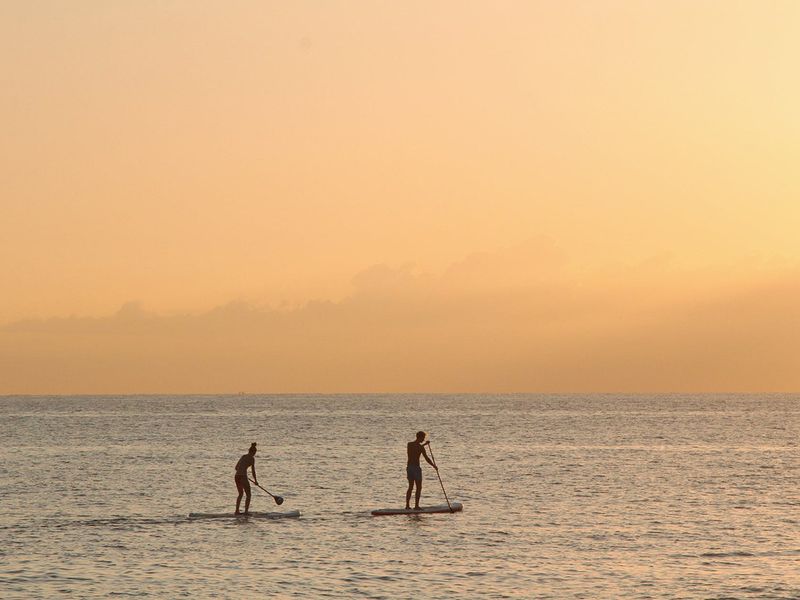
Image Credit: Pexels
It’s no exaggeration: winters do get cold here. “I love walks in the early morning,” Hiba Hani said to Gulf News. “It’s so cold I have to wear gloves! Something I never thought possible in the UAE.” Hiba was born and raised in Dubai her whole life. She isn’t the only one surprised by the colder clime.
“I am from Dublin and have grown up in cold weather,” Andrea O’Neil, a Dubai resident who hails from Ireland, said to Gulf News. “But I feel cold. I regret not packing any jumpers in my bag when I moved here a few months ago.” Most of the people Andrea speaks to back home believe that she is exaggerating about feeling cold here in the UAE. “I told my friend Mark to pack a jacket when he comes to visit me and he laughed over the phone.”
Many may scoff at the idea of it being cold in the UAE. It’s a common misconception: people outside do assume it is hot around here all year round. But a few weeks into 2021, the mercury did drop even more, and our version of winter clothes emerge from the back of the closet.
5°C to 10°C: Minimum temperatures
UAE officially marked the start of winter on Tuesday, December 22, 2020 corresponding to the winter solstice — a phenomenon that regions globally use to mark seasons. Saturday, January 9, 2021, was the first time sub-zero temperature was recorded in the town of Raknah in Al Ain at -2° Celsius.
The current low temperatures in the country, the NCM forecaster said, is due to a “cold mass” coming from the northeast, which trigger the cold northeasterly winds. “Minimum temperatures this month, especially in internal parts of the UAE, will be between 5°C to 10°C, and will be lower in mountainous regions. In coastal areas, like Dubai and Sharjah, minimum temperatures will be between 11°C to 17°C.”
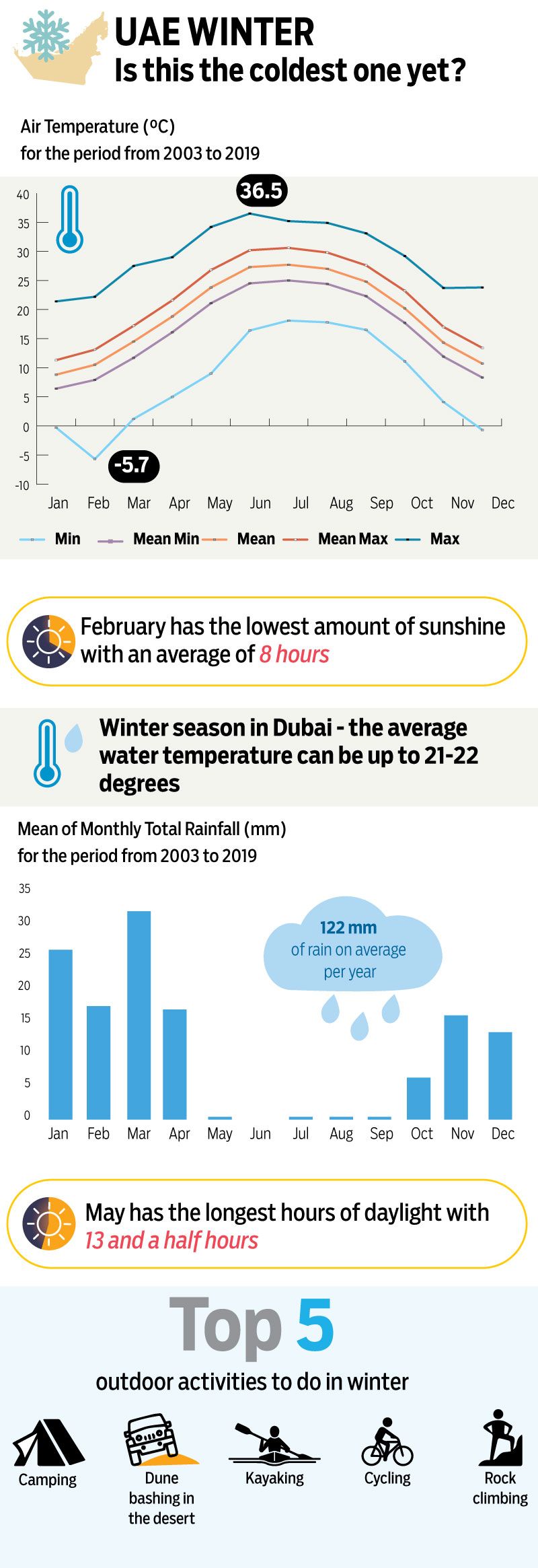
2021 winter: What to expect
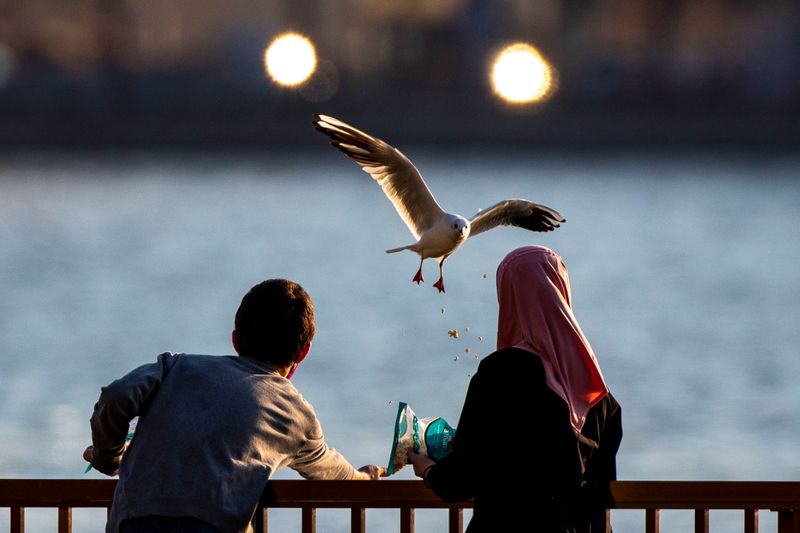
Image Credit: Ahmed Ramzan, GN Photographer
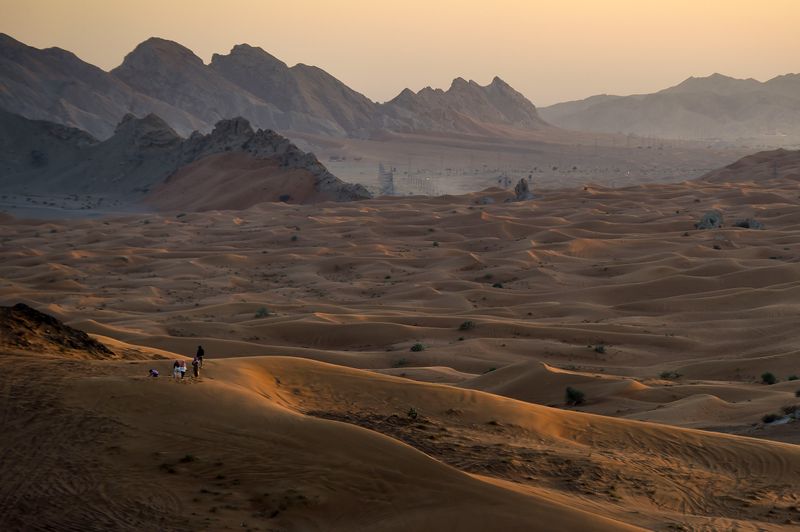
Image Credit: Ahmed Ramzan, GN Photographer
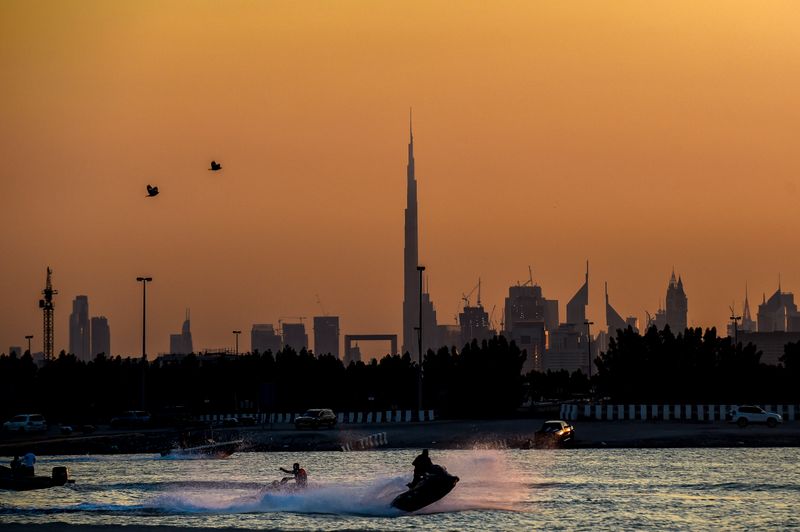
Image Credit: Ahmed Ramzan, GN Photographer
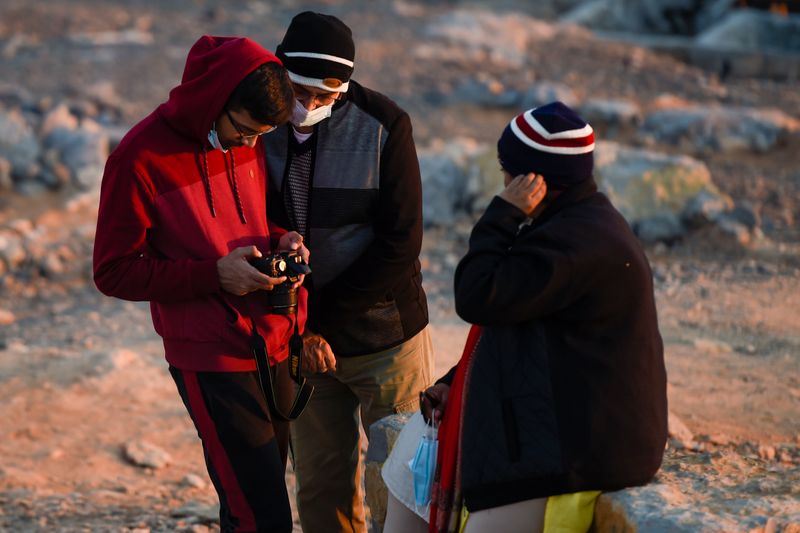
Image Credit: Ahmed Ramzan, GN Photographer
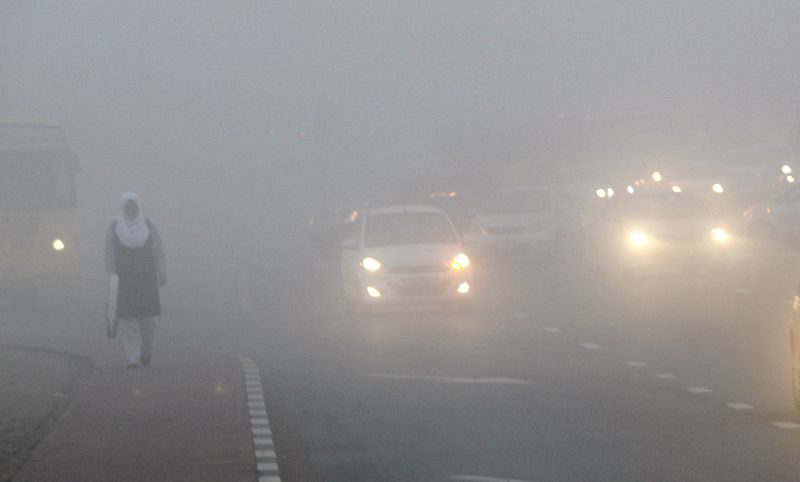
Image Credit: Ahmed Ramzan, GN Photographer

Image Credit: Ahmed Ramzan, GN Photographer
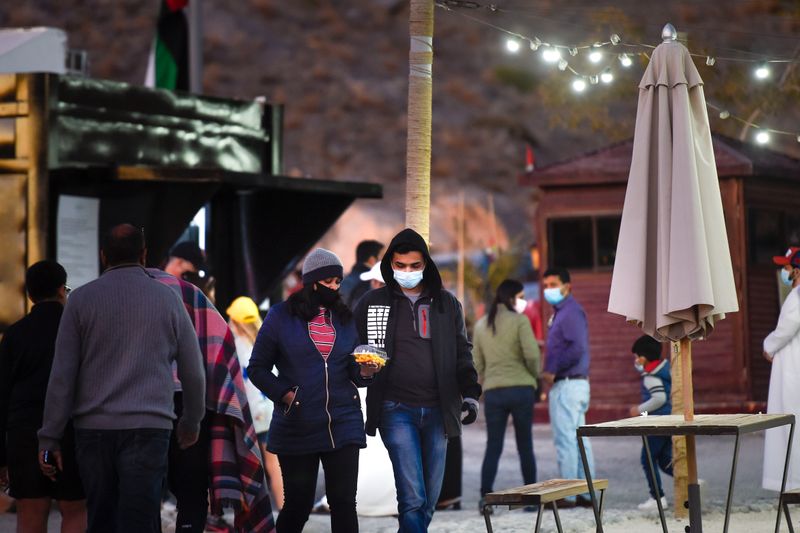
Image Credit: Ahmed Ramzan, GN Photographer
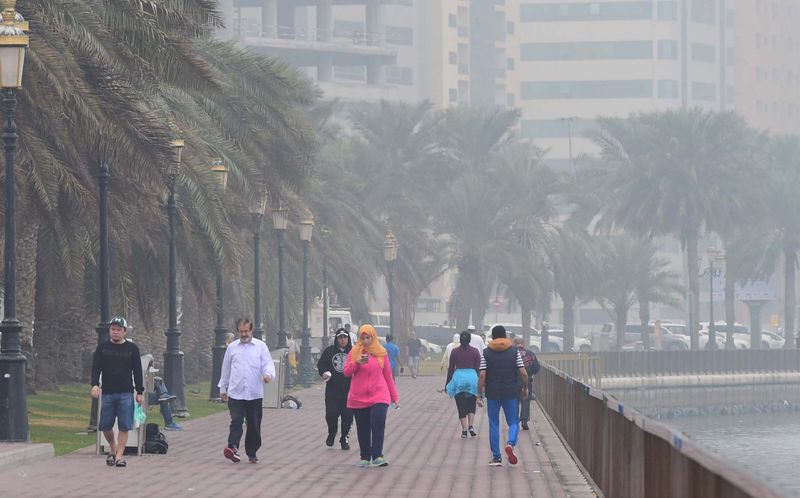
Image Credit: Ahmed Ramzan, GN Photographer
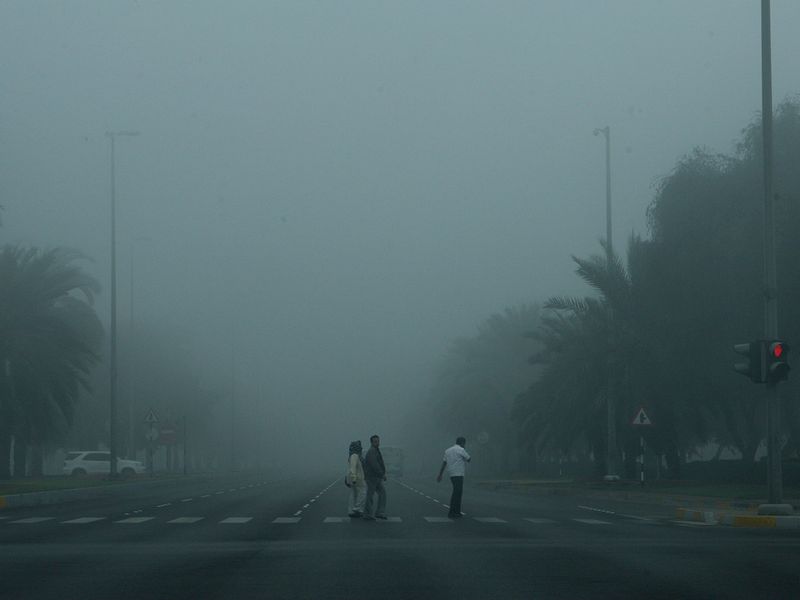
Image Credit: Ahmed Ramzan, GN Photographer
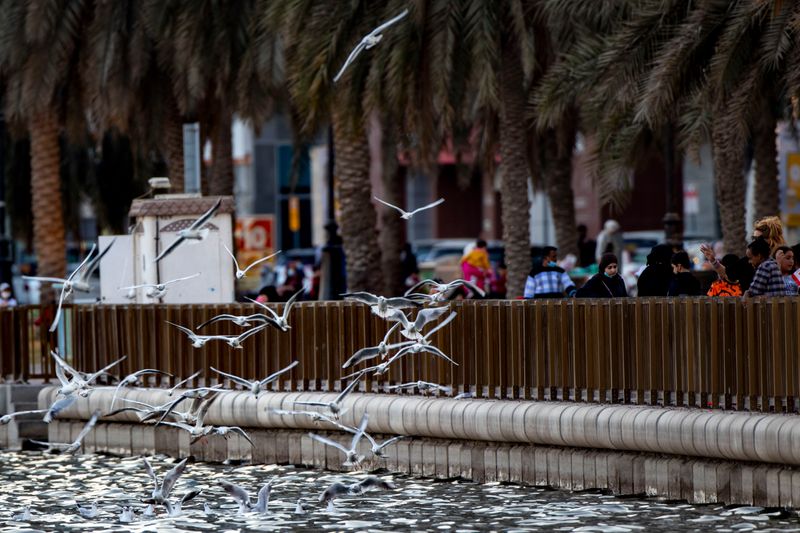
Image Credit: Ahmed Ramzan, GN Photographer
“Additionally, during this month, the region is affected by a succession of low-pressure systems that pass from the western part of the country to the east,” the NCM report stated. “The UAE weather will also be affected by the extension of the Red Sea trough, at times. On some days, these pressure systems associated with upper air troughs will lead to cloudy skies over the country, resulting in rainfall.”
The country will also experience strong northwesterly winds (Shamal), which will cause sand and dust to blow overexposed areas in the internal regions. These winds will lead to rough seas and an increase in wave height. The report further added that an increase in relative humidity will increase the chances of fog or mist formation. “The frequency of fog or mist increases over in-lands as compared to coastal areas,” the report said.
How to take advantage of the coolest months

Image Credit: GN Archives
In fact, the winters are so wonderful here in the UAE that Sheikh Mohammed Bin Rashid Al Maktoum, Vice President and Prime Minister of UAE and Ruler of Dubai, approved a strategy for domestic tourism that aims to encourage residents to explore in their own backyards. The campaign, dubbed, ‘World’s Coolest Winter’ has prompted residents and citizens to explore the hidden gems of the seven emirates.
“I love winter,” Hisham Younes told Gulf News. “From Jabal Jais to the Liwa Desert, the UAE has so much to offer in terms of natural beauty, I have lived here almost all my life and have yet to see it all. The winter season is a perfect time to take in all these amazing sights. I personally love heading out in the early morning to the desert, finding a quiet spot with a beautiful view to enjoy my morning coffee and a good book.”
Hiba Hani is enjoying the feels-like-I-am-abroad vibe. “Honestly the weather is giving me major Europe vibes, so in a way, it is making up for the global travel limitations,” she told Gulf News.
“I impatiently anticipate every winter season,” said Mohamed Zaki. “This year, I am spending a lot of my time camping. Now is the best time. I feel like we are so blessed with one of the world’s most comfortable and incredible winters.”
“The recent blue skies and crisp, cool air have been so beautiful and refreshing,” Christina Maroudias said to Gulf News. “It really does feel much cooler than usual and has been so lovely to be able to wear boots, layers and jumpers to wrap-up in the evenings. I have been trying to get outside as much as possible, I go on a walk every morning which calms my mind and sets me up for the day. The desert is incredible at the moment, and I am trying to go there every weekend, to soak in the rich nature that surrounds the city.”
If you love a rocky terrain
Hatta
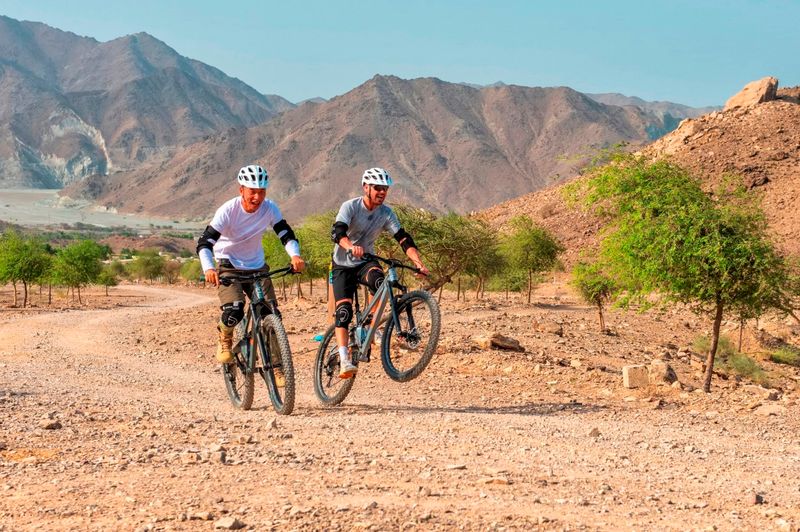
Why you should visit: Hatta is the perfect getaway from the city lights, providing an opportunity to get back to nature as well as to experience a wide range of activities. You could go mountain biking or hiking in the Hajar Mountains – also known for its stunning views – or enjoy wadi-bashing in the riverbeds and even go kayaking in the Hatta Dam. The Hatta Wadi Hub offers visitors experiences such as a 10-metre high climbing wall that includes five lanes, a slingshot that propels those looking for adventure, fun and suspense to a height of up to 50 meters, and paragliding.
Where: Dubai, 24.789697065050316, 56.119514087516066
Cost: Free
Jebel Jais
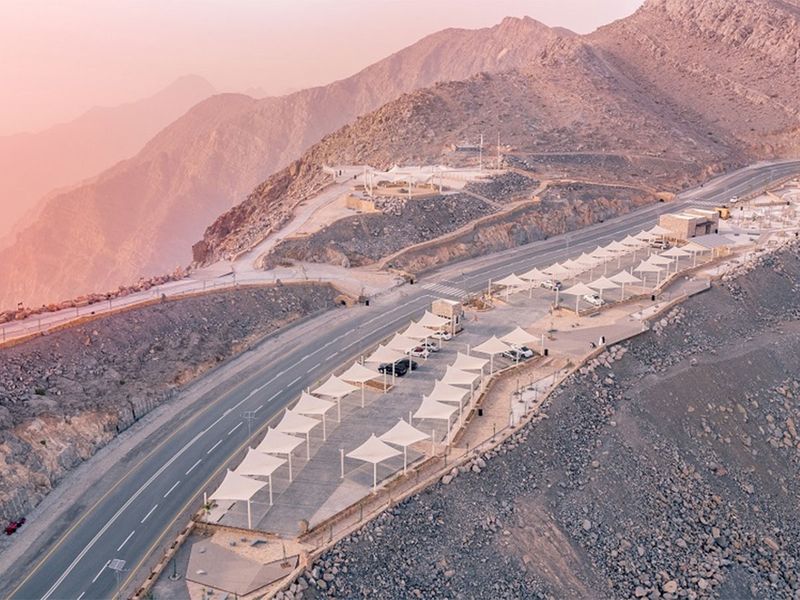
Why you should visit: One of the UAE’s highest peaks, Jebel Jais is part of the Hajar mountains that were formed over 70 million years ago in the eastern part of Ras Al Khaimah and Oman. Towering at 1,934 meters above sea level, Jebel Jais has amazing views, thrilling adventures, and a welcome respite from the heat with temperatures around ten degrees cooler than sea level. The park’s cultural and natural features are one of the cultural sites of Al Ain that make up the UAE’s first designated UNESCO World Heritage Site. The park is operated by Barari Natural Resources, the environmental management organisation that conserves and manages forests and nature reserves across the emirate of Abu Dhabi, including Sir Bani Yas Island and Telal Resort. There are a number of fun things to do in Jebel Hafeet Desert Park. Whether you like to explore the desert on wheels, on foot or the traditional way – on a camel.
Where: Ras Al Khaimah, 25.954559398387044, 56.18371718371678
Cost: Free
Jebel Hafeet Desert Park
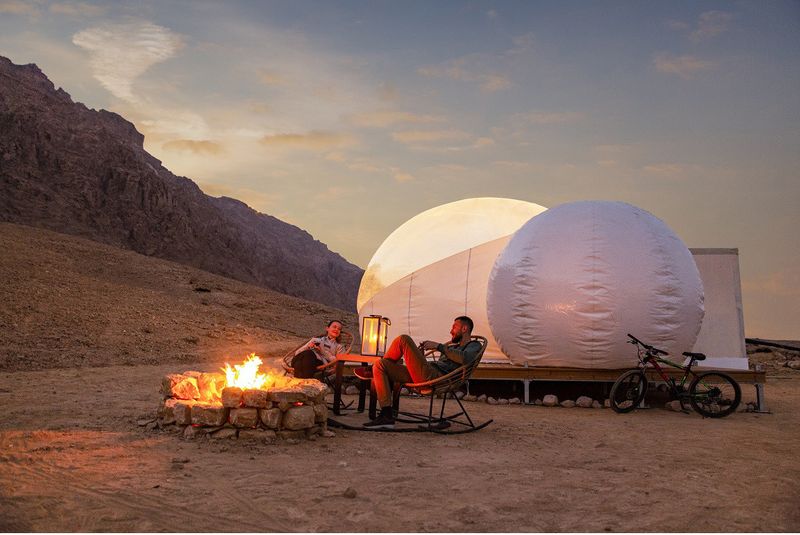
Why you should visit: Al Ain’s Jebel Hafeet Desert Park is one of Abu Dhabi’s newest cultural and outdoor adventure attractions. Located at the foot of Jebel Hafeet Mountain, the park offers guests a mix of history, culture, and stunning natural landscapes. The park’s cultural and natural features are one of the cultural sites of Al Ain that make up the UAE’s first designated UNESCO World Heritage Site. The park is operated by Barari Natural Resources, the environmental management organisation that conserves and manages forests and nature reserves across the emirate of Abu Dhabi, including Sir Bani Yas Island and Telal Resort. There are a number of fun things to do in Jebel Hafeet Desert Park. Whether you like to explore the desert on wheels, on foot or the traditional way – on a camel.
Where: Abu Dhabi, 24.044473021228047, 55.836862026987816
Cost: Dh350 to access the public campsite, Dh500 for a night in the tent
Wadi Showka
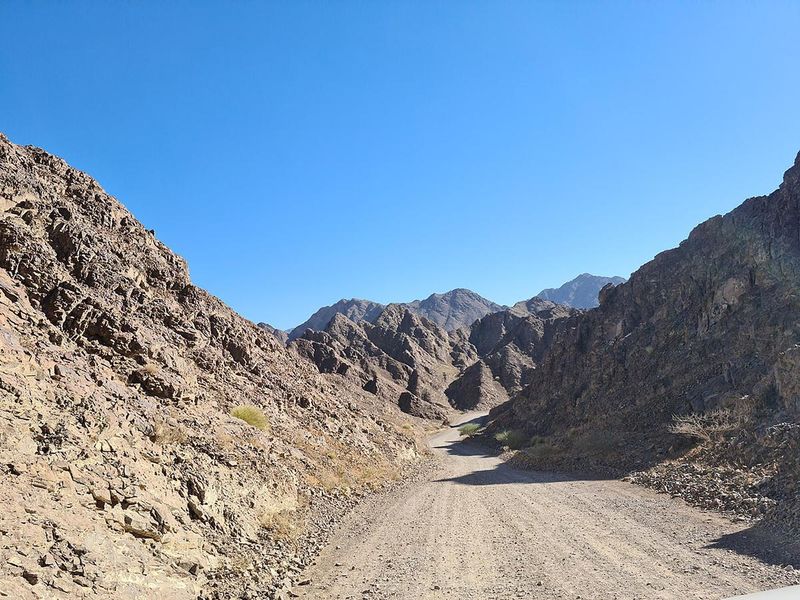
Why you should visit: Located just 45 minutes away from Dubai, Wadi Showka has become a popular spot for many UAE residents looking to escape the bustle of the city. You can go hiking in the mountains, biking on certain trails as well as a kids’ playground, and the Shawka dam. Currently open for tourists with some facilities. Wadi Shawka is the ideal family recreational and picnic location. A dam was built following the instructions of the late Shaikh Zayed Bin Sultan Al Nahyan in 2001. At 120mm, Wadi Shawka receives one of the highest rainfalls in the country and the dam helps harvest rainwater.
Where: Ras Al Khaimah, 25.134655936788846, 56.04162185423917
Cost: Free
If you love mangroves
Al Zorah Mangroves and Lagoon
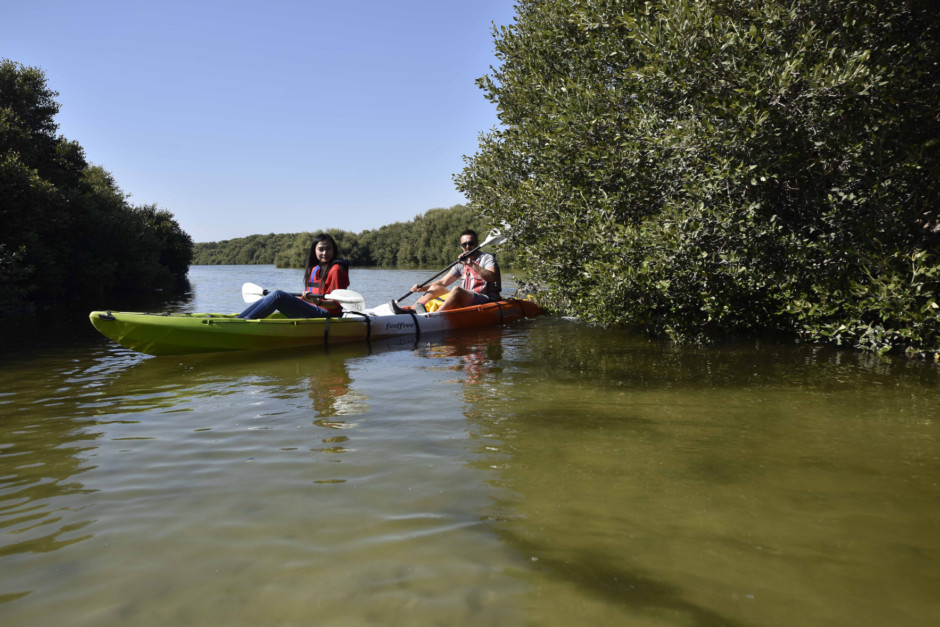
Photo Clint Egbert/Gulf News
Why you should visit: The species of mangrove found in Al Zorah is called the Avicennia marina, commonly known as the grey or white mangrove and close to 58 different species inhabit this ecosystem. While you can have a pick between embarking on this tour during low or high tide, we would recommend the hour close to sunset that gives the landscape an almost surreal appeal. Mangrove tours are priced at Dh150 for adults and Dh130 for children under 12 years. Each trip, including safety instructions, lasts two hours.
Where: Ajman, 25.437377777610156, 55.46527834093501
Cost: Starting from Dh100 onwards
Jubail Mangrove Park
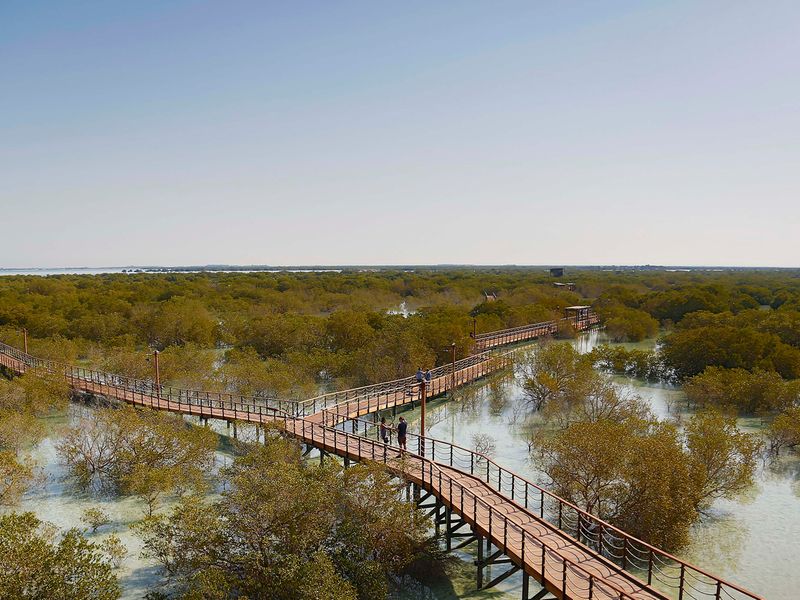
Image Credit: Gulf News
Why you should visit: The mangrove park is the first self-contained educational, nature and leisure destination of its kind in the Emirate of Abu Dhabi. Here, you can visit and explore a haven of marine species native to Abu Dhabi. It is mainly a mangrove sanctuary. A meandering boardwalk will take you through the mangroves and allows you to discover Abu Dhabi in its essence.
Where: Abu Dhabi, 24.545416707513986, 54.4853953691829
Cost: Tickets start from Dh10
If you love the desert
Liwa Desert a.k.a Rub Al Khali
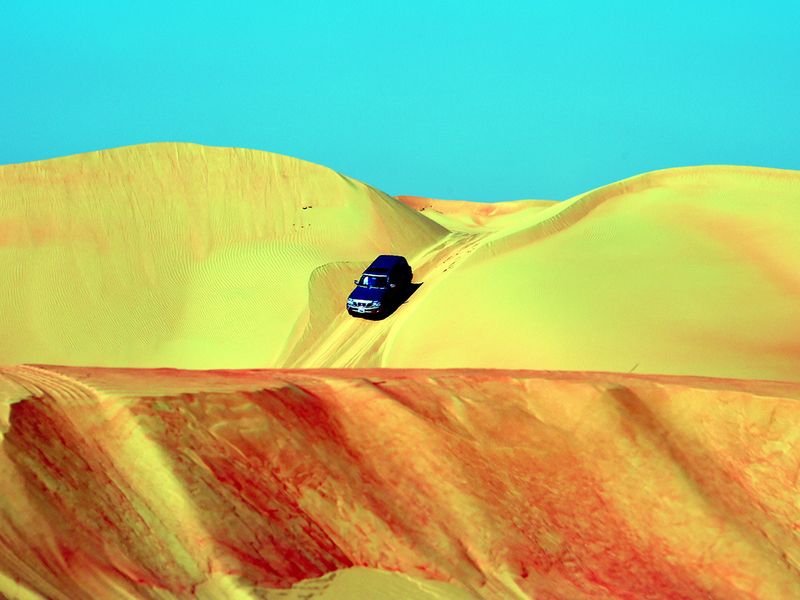
Why you should visit: Also known as “The Empty Quarter” only the very experienced dune-bashers go here. Liwa desert is known for the festivals and challenges that are conducted annually. Bordering Saudi Arabia, Oman and Yemen, myths and folklore narrate the story of an ancient city that once resided in the middle of the Rub Al Khali, but it was lost to the sands of time and till date, no one has been able to locate the ruins. It is the largest desert in the Arabian Peninsula. Spread over a wide area, with very soft sand, Liwa desert shares its border with Saudi Arabia. Stretching beyond the Abu Dhabi’s lush Liwa Oasis, with the Moreeb dune — the tallest in the UAE — a feat to behold. But novice drivers beware, it is easy to lose one’s way in the Rub Al Khali, hence it’s advisable to go as part of a convoy or with an expert guide. The desert offers a welcome blanket to set up camp but striking out solo deep into the Rub Al Khali should be avoided. While there, do take time to explore the town of Liwa, one of the few places that offers a brief glimpse into the origins of the country and its historical heritage.
Where: Abu Dhabi, 22.848392331340335, 53.98949205387927
Cost: Free
Buried Village of Al Madam
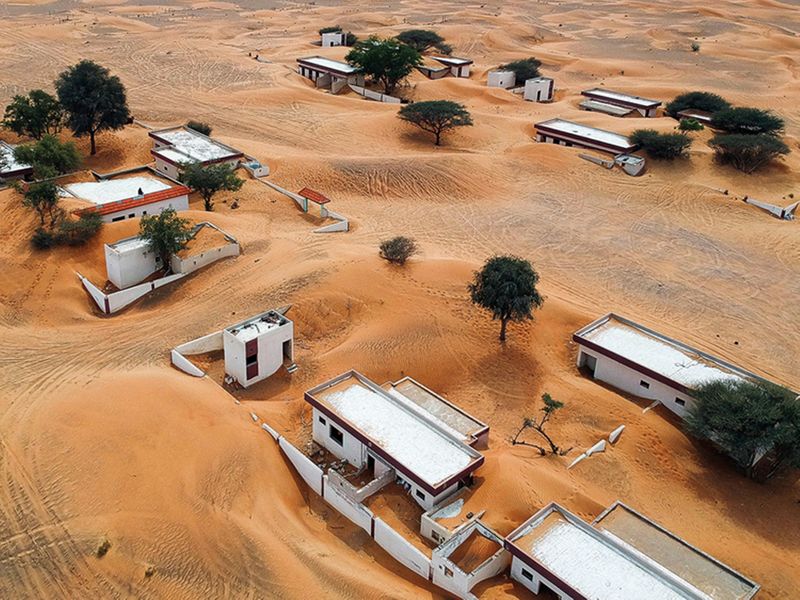
Why you should visit: Al Madam is an abandoned village, dating a few decades back. The village now lies half-buried in sand, and nobody is exactly sure why. Located just on the edge of the Dubai border, it is worth the trip, just so you can see how the houses have been engulfed by the desert. Affectionately known as the “Madam Ghost Town” this area was built in the 70s, as part of a housing project. You will notice that all of the houses are the same. The village is made up of just two rows of identical houses and a mosque in the far corner. he village, according to locals, was once inhabited by Al Kutbi tribe, one of the three prominent tribes residing in and around Al Madam, a small town governed by Sharjah emirate. The local legend goes that jinns were the reason for the villager’s departure of the area. Jinns are supernatural creatures that Muslims believe exist in this world but not visible to human eyes.
Where: Sharjah, 24.894612, 55.763894
Cost: Free
Lahbab Desert

Image Credit: GN
Why you should visit: Known for its spectacular red sands, Lahbab is a popular night-time haunt for new campers. Many start off close to the familiar Fossil Rock that’s also a great place for stargazing. A barbecue in this weather is the best thing to do while attempting the ‘Big Red’, a 300-foot high sand dune, is a dune basher’s delight. You could also head over to the sleepy village of Madam just before the Hatta border crossing for more camping spots where you may have some wandering camels from local farms for company.
Where: Dubai, 25.050124501814, 55.59266294671861
Cost: Free
Sweihan

Why you should visit: Located in Abu Dhabi, it is on the border of three cities: Abu Dhabi, Dubai and Al Ain. Sweihan is known as “Little Liwa”, since it is the practising ground of Liwa enthusiasts. Sweihan is different than the other deserts and is only advised for experienced drivers, due to its big dunes and soft sands. With proper guiding and GPS, one can see an abundance of camels and lone Emiratis with their falcons here. Naqrah is a sand dune located deep in the Sweihan desert, which needs to be tried at least once by dune bashing buffs.
Location: Abu Dhabi, 24.399723724671137, 55.28281904885302
Cost: Free
If you want to camp in the UAE
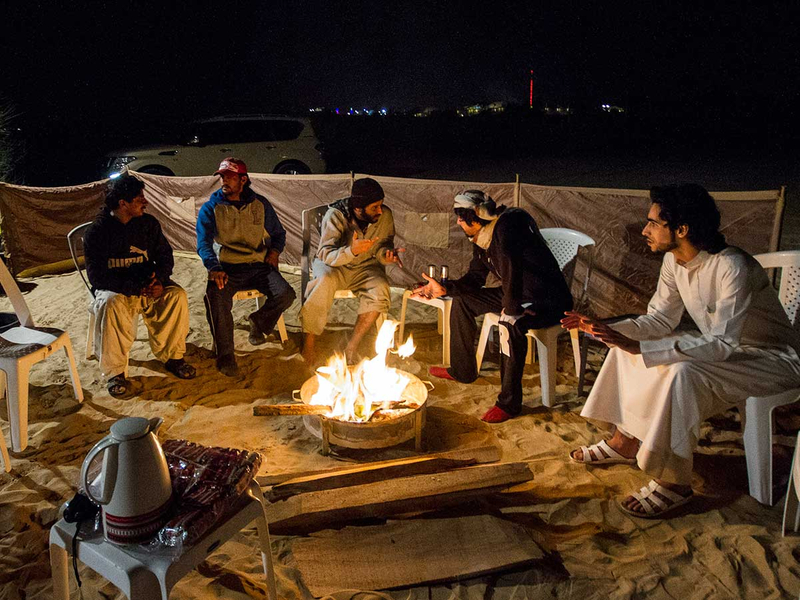
Image Credit: Supplied
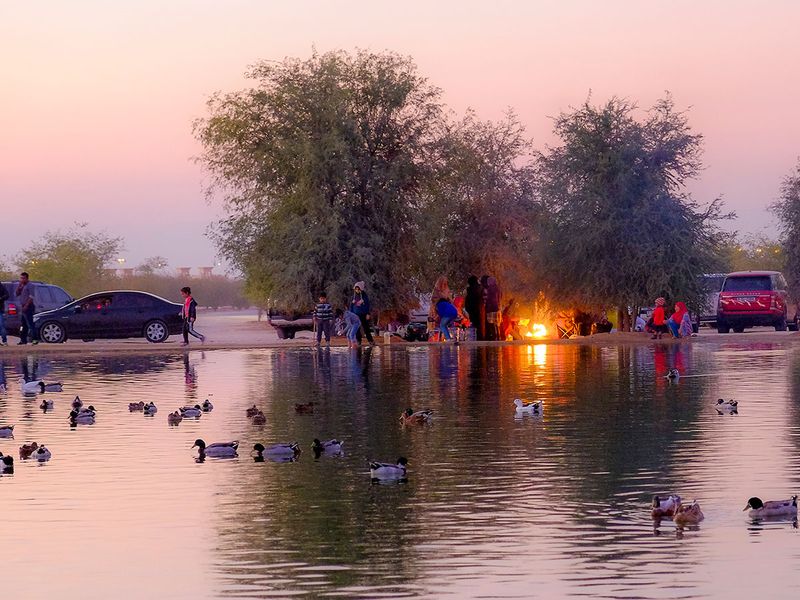
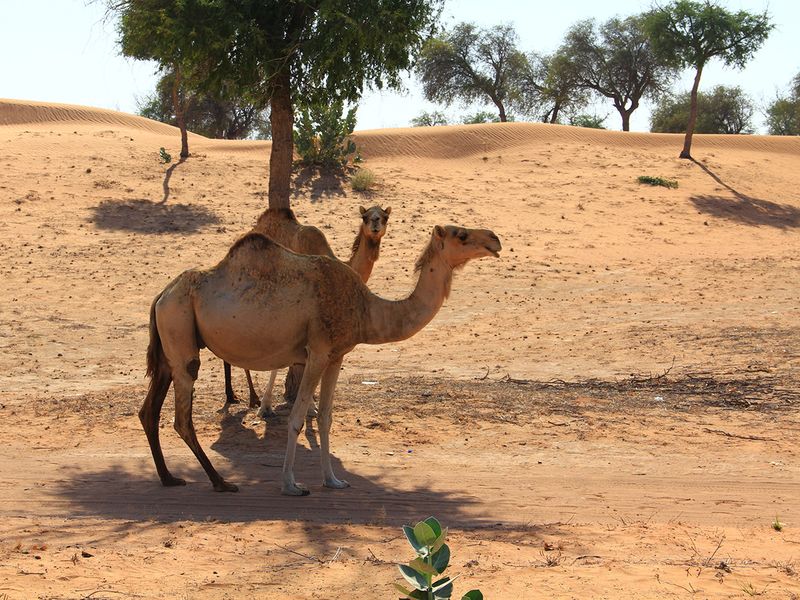
Image Credit: Sajan Sadiq/Gulf News reader
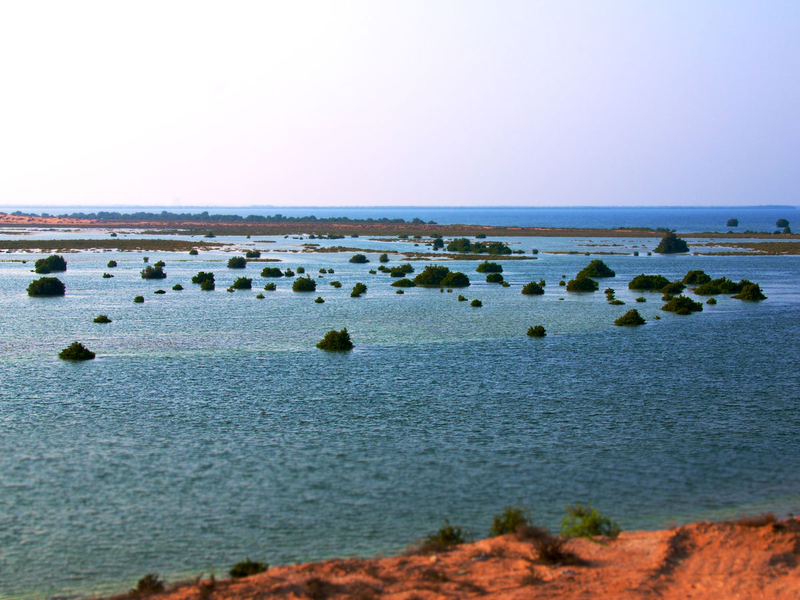
Image Credit: Wikimedia
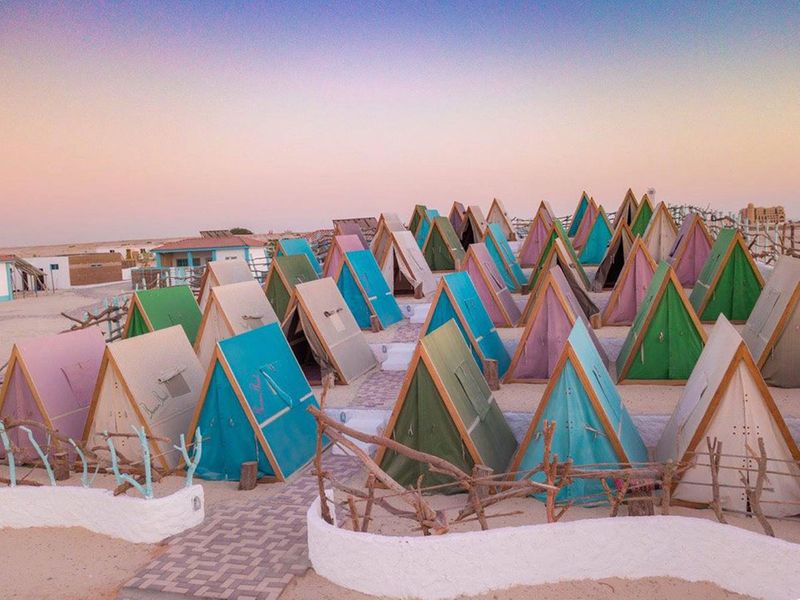
Image Credit: Supplied
5 memorable weather moments in the UAE
Throughout the UAE’s history, some winters have left more of an impression than others. Bringing icy rains and the occasional light blankets of snow, here are the winters that have remained lodged in the cultural memory.
January 2020
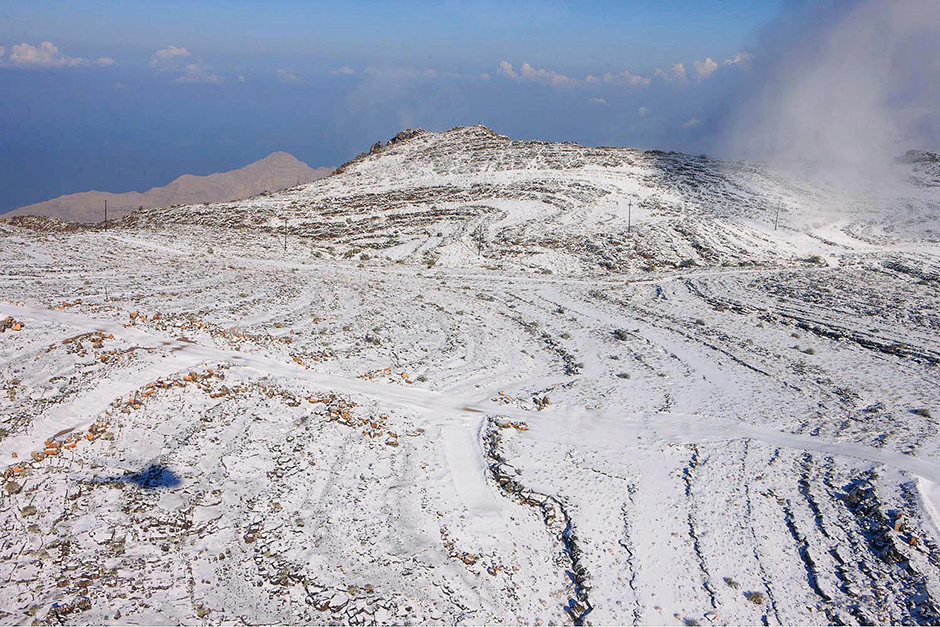
Image Credit: Gulf News archives
One of those moments took place last year this exact week. UAE residents enjoyed the winter chill, as it literally started snowing in Jebel Jais, where the temperature reached -1 °C in the early hours of January 15, 2020.
November 2018
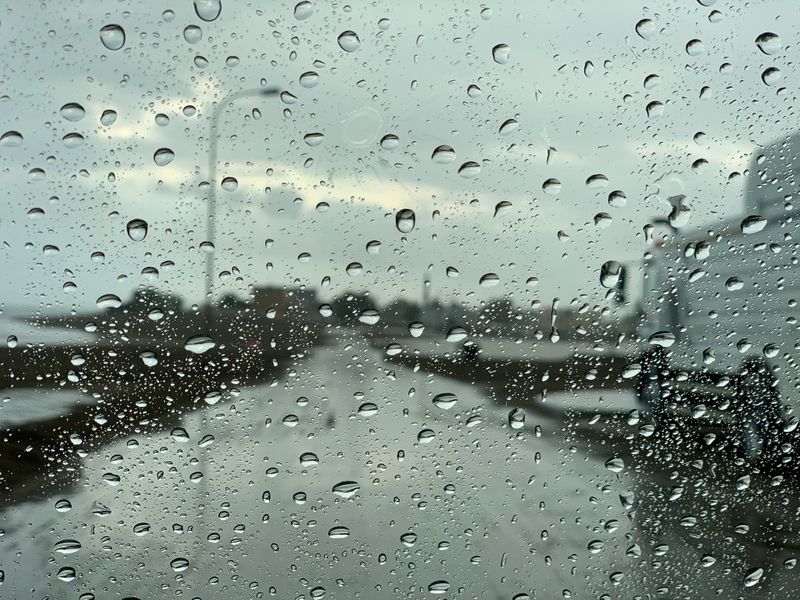
Image Credit: Twitter
Another momentous winter day was the infamous heavy downpour of November 2018, which caused schools to close down as flooded roads caused an increased number of accidents that day. Even flights into and out of Dubai International Airport were delayed due to bad weather conditions.
February 2017
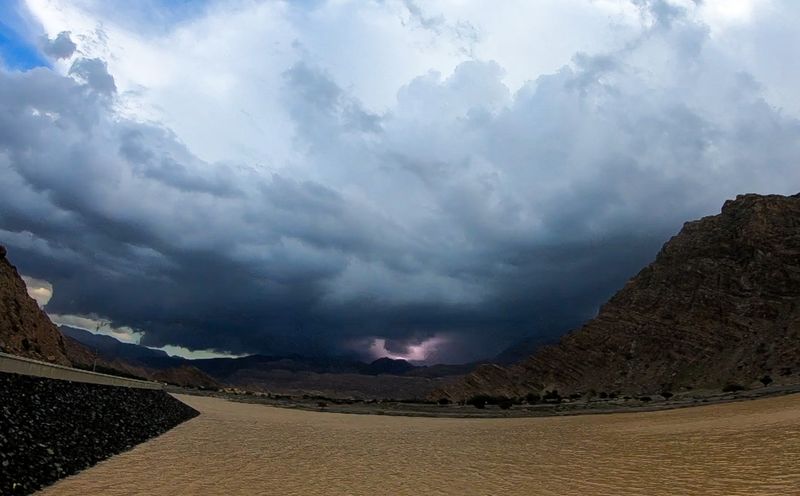
In fact, statistics by the UAE’s National Centre of Meteorology over the last decade show that -5.7° Celsius was the coldest temperature reached in the UAE at Jebel Jais in February 2017.
January 2015
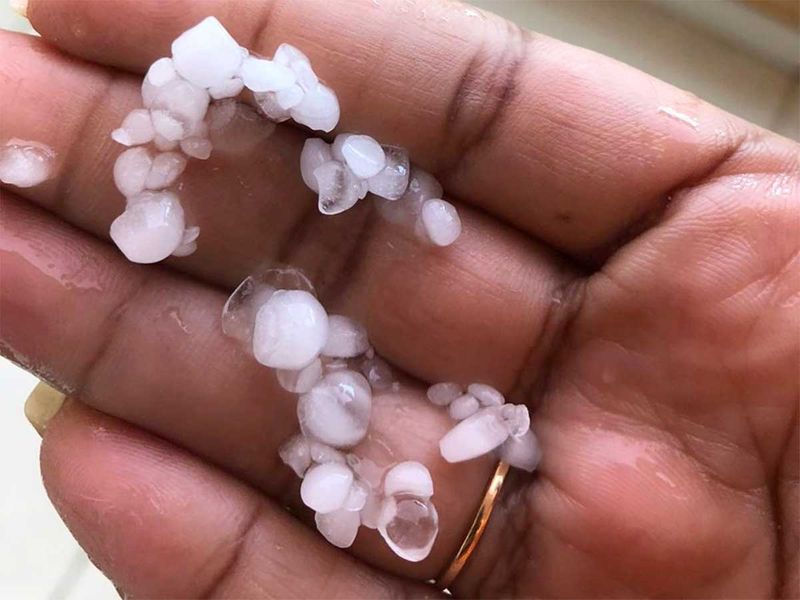
Image Credit: Thara Thankachan/Gulf News reader
The “Freak Hail Storm” that kicked off 2015 is particularly memorable due to the marine warning that the NCM was issuing. Waves were as high as 12 feet in the Arabian Gulf. The highest rainfall recorded that month was 38.2mm in one day.
January 2009
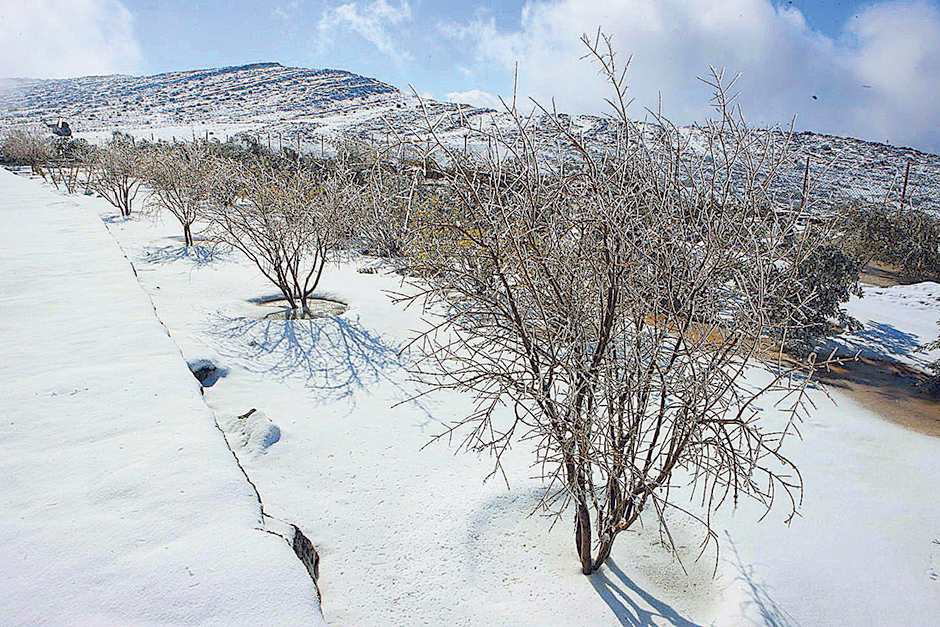
Image Credit: WAM/Gulf News Archives
At the start of 2019, Ras Al Khaimah Residents experienced a heavy snowfall on Jebel Jais mountain. Snow fell heavily on the mountains of Ras Al Khaimah on a Friday night, leaving the mountain range covered in a thick white blanket of snow.
What you need to know about the UAE climate

Image Credit: Virendra Saklani/Gulf News
The United Arab Emirates has what qualifies as a desert climate. Desert climates are the most common type of climate on earth after the polar climate. Over two-thirds of the earth’s surface is covered in water from the oceans.
The remaining one-third of the earth’s surface is dry land on which humans live, but a third of that dry land is really dry. It’s the desert. Much of the deserts in the world are located north and south of the equator, these are called the subtropical zones.
The UAE’s subtropical desert climate is characterised by mild winters and very hot summers, in which the humidity of the Arabian Gulf, which could make the heat unbearable in between June and September.
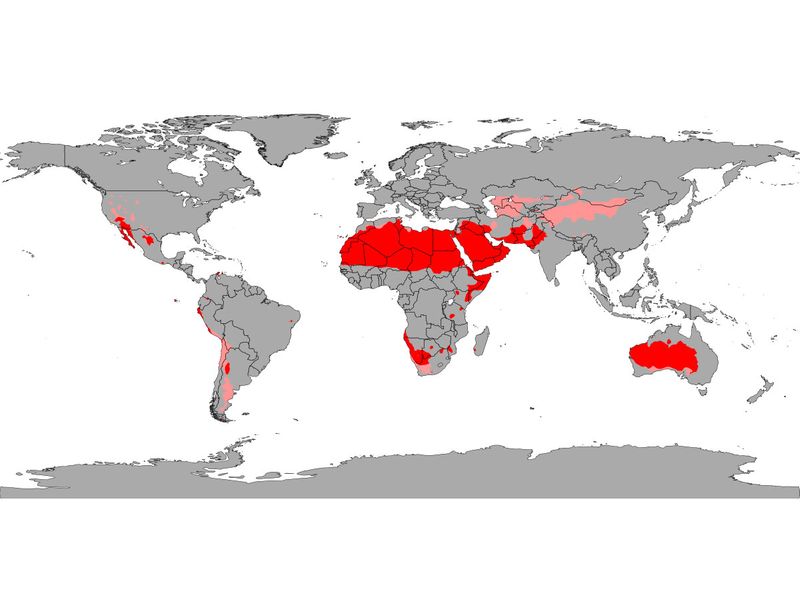
Image Credit: Wikipedia
There are two types of desert climates:
Hot and cold Hot desert climate
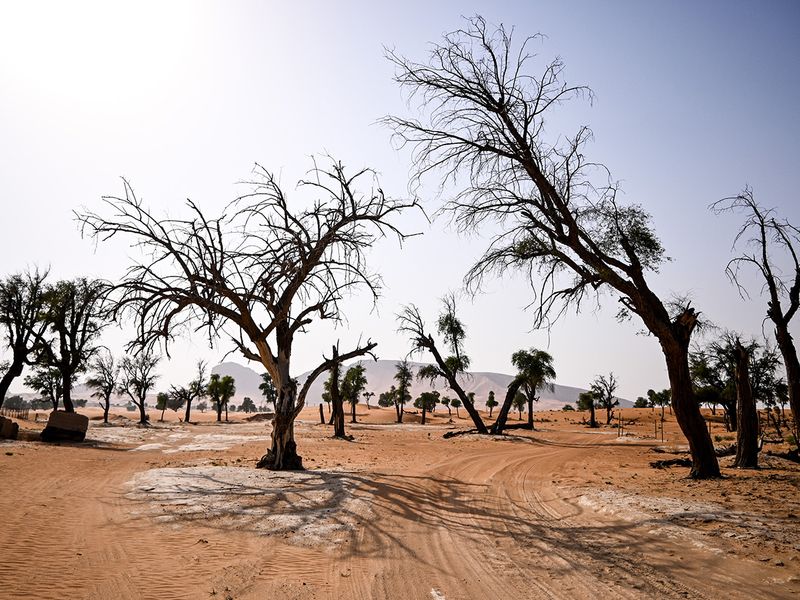
Image Credit: Ahmed Ramzan/Gulf News
Hot arid areas with little rainfall, high temperature and sparse vegetation. Generally, the deserts that are found in the sub-tropical regions (north and south of the equator) are hot deserts. Temperatures are higher with mild winters and extremely hot summers.
These include: The Arabian Desert, the Sahara Desert and the Namib Desert to name a few.
Cold desert climate
Typically found in regions at higher latitudes including the areas above the tree lines of mountain ranges. The temperatures are lower with mildly hot summers and extremely cold winters.
These include: The Arctic, the Antarctic and Greenland. An arctic desert island in Franz Joseph Land
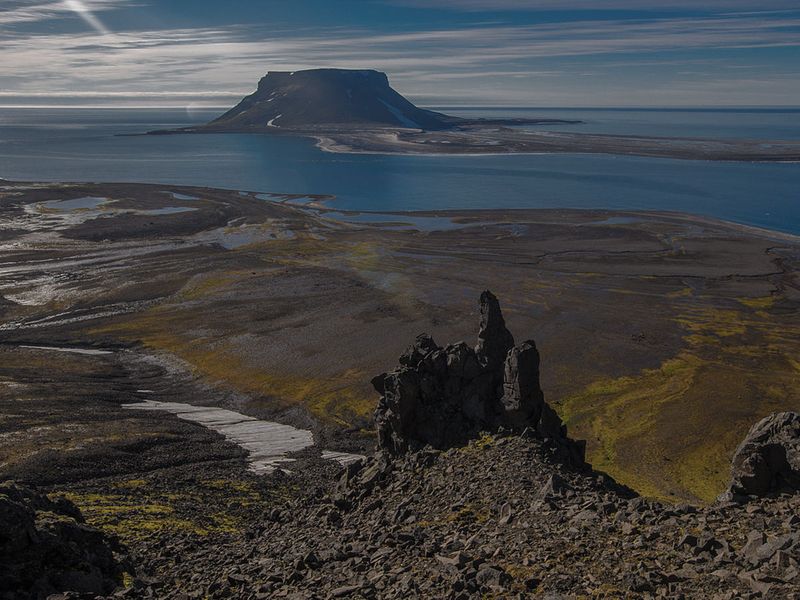
Image Credit: Wikipedia
Rain in the UAE
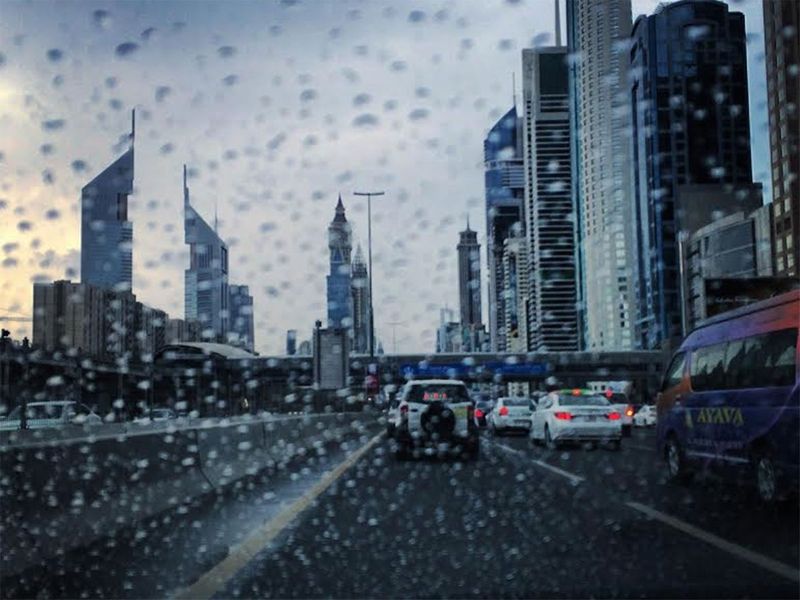
Image Credit: Gulf News reader Naman Dagariya
Naturally-occurring rain is generally rare for hot desert climates. Annual precipitation is below 100 millimetres (4 inches) and is concentrated in the winter months.
But when it does rain, it occurs in the form of showers or downpours, which can sometimes be quite intense, which many UAE residents can attest to. Additionally, the UAE has had many instances of induced rain. The NCM revealed that they conducted a total of 219 cloud seeding operations across the UAE in the first six months of 2020 to enhance the country’s water supply.
In fact, according to the NCM, the UAE is one of the first countries of the Arabian Gulf region to use the cloud seeding technology. This involves using sophisticated weather radars to monitor the atmosphere of the country around the clock, as well as the use of a private airplane supplied by special salt flares, has been manufactured to fit with the nature of the physical and chemical properties of the clouds that form in the UAE.
Once the clouds are deemed appropriate they are “seeded” by firing special flares that are loaded with salt crystals into convective clouds. The process then attracts tiny particles of water that collide and become heavier which then fall as rain.
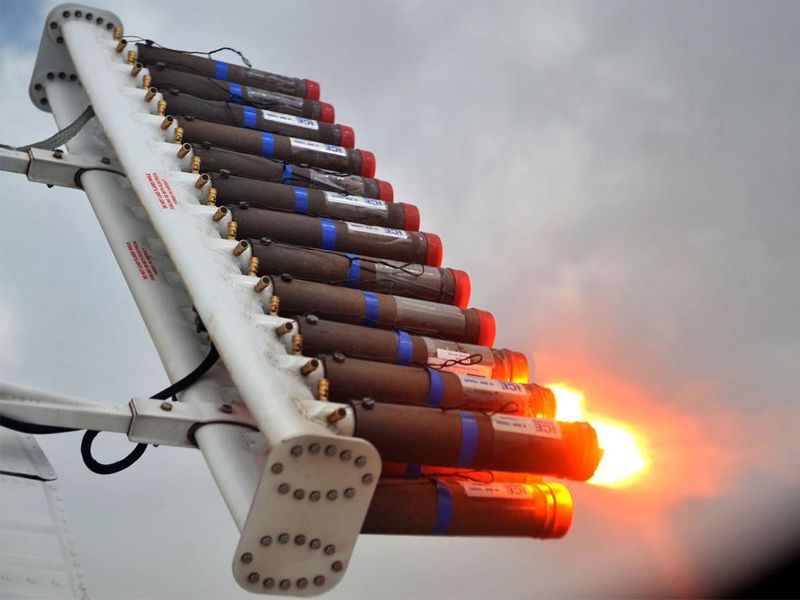
Image Credit: Supplied: NCM
So although desert climates should get less than 100mm of rain annually, the UAE has an average of 122mm of rainfal per year according to data by the NCM.
For tomorrow’s weather report, expect a low between 2°C. and 8 °C. and a high between 22°C to 26°C.
Enjoy the winter!






